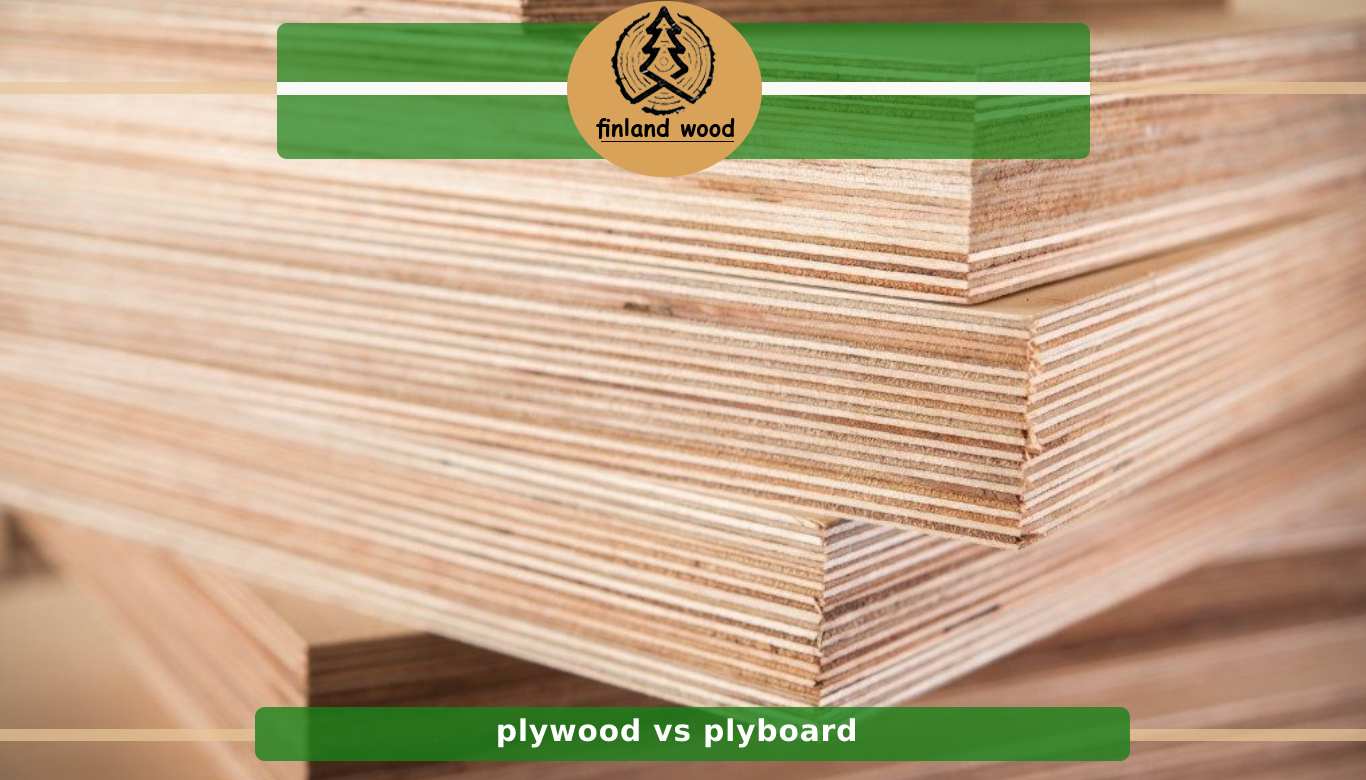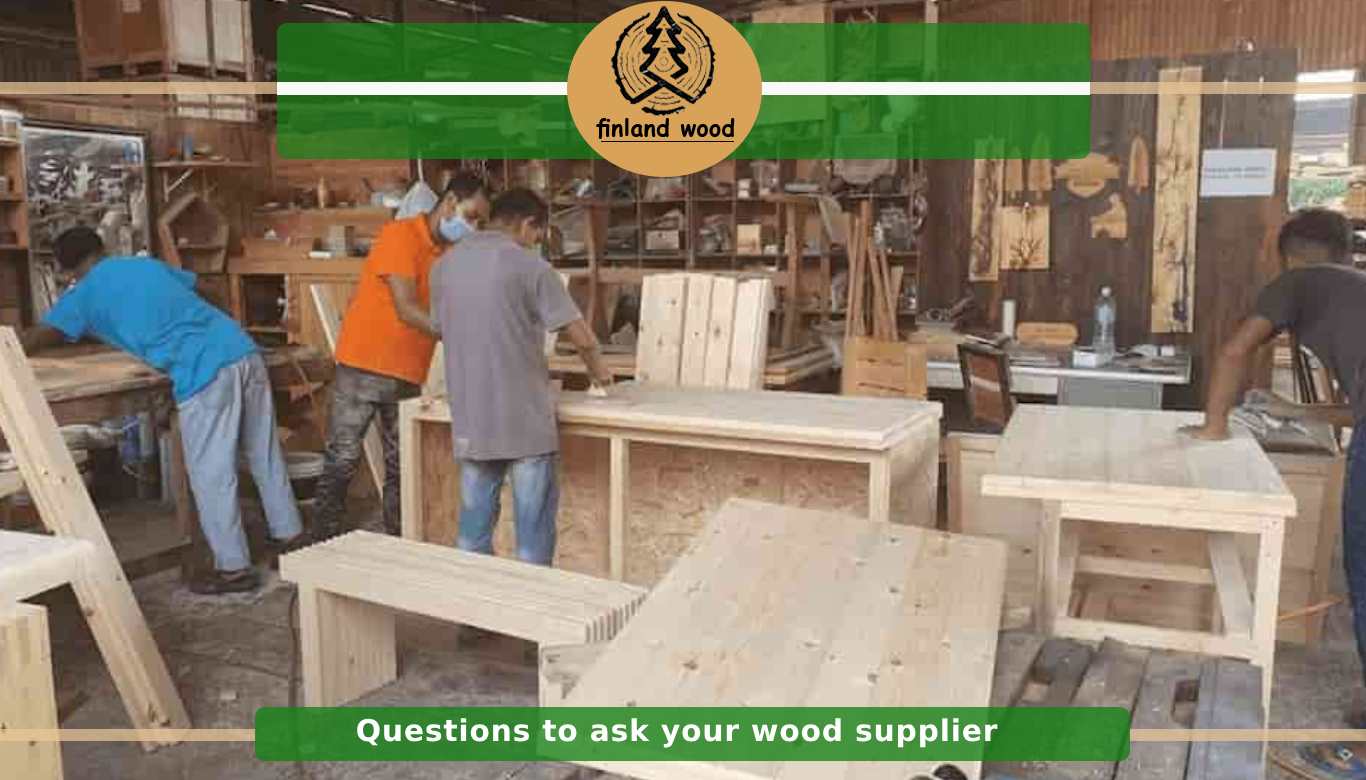Plywood and plyboard are two different products. Plywood is a manufactured wood panel made from thin sheets of wood veneer, while plyboard is a generic term for a variety of engineered wood products. Plywood is stronger and more durable than plyboard, and is typically used for construction and furniture-making. Plyboard is often used for interior paneling, flooring, and other decorative applications.
What is plywood made of?
Plywood is an engineered wood product that is made by bonding together several thin layers of wood veneers with adhesives. The wood veneers used in plywood are typically made from a variety of hardwood or softwood species, including birch, maple, oak, pine, and spruce. The veneers are sliced or peeled from logs and then dried to a specific moisture content.
The veneers are then layered together with each layer being oriented perpendicular to the adjacent layers. This cross-grain construction gives plywood its strength and durability, as it distributes loads evenly across the surface and resists warping or splitting. The number of layers in a sheet of plywood can vary, but typically ranges from three to seven or more, with additional layers increasing the strength and stability of the plywood.
The layers of wood veneers are then bonded together with adhesives, such as urea-formaldehyde or phenol-formaldehyde resins, under heat and pressure. This process creates a strong and rigid composite board that can be used in a wide variety of applications, including flooring, roofing, cabinetry, and furniture. The final product is typically sanded smooth and may be coated with a finish or veneer for added durability and aesthetic appeal.
What is plyboard use for?
Plyboard, also known as particleboard, is an engineered wood product that is made by bonding together wood particles or fibers with a resin adhesive and then compressing them into sheets. It is a versatile material that can be used in a variety of applications, including:
- Furniture: Plyboard is a popular material for making furniture, such as bookcases, cabinets, and shelves. It can be painted or covered with veneers to create a smooth, uniform appearance.
- Flooring: Plyboard can be used as a subfloor or underlayment for other flooring materials, such as carpet or tile.
- Wall paneling: Plyboard can be used as a base for wall paneling, such as beadboard or wainscoting.
- Doors: Plyboard can be used to make interior doors, such as closet or pantry doors.
Crafts and DIY projects: Plyboard is a popular material for crafts and DIY projects, such as picture frames, storage boxes, and decorative signs.
Overall, plyboard is a cost-effective material that is suitable for a wide range of applications, particularly those that require a smooth and uniform appearance. While it may not be as strong or durable as other engineered wood products, such as plywood, it is a versatile material that can be used in many different ways.
plywood vs plyboard
Plywood and plyboard are both engineered wood products that are widely used in construction and woodworking projects. While the terms “plywood” and “plyboard” are sometimes used interchangeably, they actually refer to two different products with distinct characteristics.
Plywood is made by bonding several thin layers of wood veneers together with adhesives, with each layer being oriented perpendicular to the adjacent layers. This cross-grain construction gives plywood its strength and durability, making it ideal for use in applications such as flooring, roofing, and cabinetry. Plywood is available in a range of thicknesses and grades, and can be made from a variety of wood species.
Plyboard, on the other hand, is made by bonding wood particles or fibers together with resin and heat, and then compressing them into sheets. Plyboard is generally less expensive than plywood, but it is also less durable and strong. It is often used for interior applications such as wall paneling and furniture, as well as in the manufacture of packaging materials.
In summary, while plywood and plyboard are both types of engineered wood products, plywood is generally stronger and more durable than plyboard, making it better suited for structural applications. Plyboard is often used for decorative or functional interior applications where cost is a consideration.
which is stronger plywood or plyboard
Plywood is generally stronger than plyboard. Plywood is made by bonding several thin layers of wood veneers together with adhesives, with each layer being oriented perpendicular to the adjacent layers. This cross-grain construction gives plywood its strength and durability, making it ideal for use in structural applications such as flooring, roofing, and cabinetry.
Plyboard, on the other hand, is made by bonding wood particles or fibers together with resin and heat, and then compressing them into sheets. While plyboard can be strong, it is generally less durable and strong than plywood, and it may be prone to warping or breaking under heavy loads.
Overall, if you need a strong and durable material for structural applications, plywood is likely to be a better choice than plyboard. However, if cost is a primary concern or if you are looking for a material for decorative or functional interior applications, plyboard may be a suitable choice.
difference of plywood and plyboard
Plywood and plyboard are two different types of engineered wood products that are made using different processes and have different characteristics. The main differences between plywood and plyboard are:
- Manufacturing Process: Plywood is made by bonding together several thin layers of wood veneers with adhesives, with each layer being oriented perpendicular to the adjacent layers. Plyboard, on the other hand, is made by bonding wood particles or fibers together with resin and heat, and then compressing them into sheets.
- Strength and Durability: Plywood is generally stronger and more durable than plyboard due to its cross-grain construction. This makes it suitable for use in structural applications such as flooring, roofing, and cabinetry. Plyboard, while strong, is generally less durable and strong than plywood, and may be prone to warping or breaking under heavy loads.
- Appearance: Plywood typically has a smooth and consistent surface with a natural wood grain, which makes it suitable for a variety of decorative applications. Plyboard, on the other hand, often has a rougher texture and a more uniform appearance, which makes it suitable for functional applications such as shelving or furniture.
- Cost: Plyboard is generally less expensive than plywood, making it a popular choice for cost-sensitive applications.
Overall, while both plywood and plyboard are engineered wood products, they have different characteristics and are suited to different applications. Plywood is generally stronger and more durable than plyboard, while plyboard is less expensive and has a more uniform appearance.
which is cheaper plywood or plyboard
In general, plyboard is cheaper than plywood. This is because the manufacturing process for plyboard is simpler and requires less expensive materials, such as wood particles or fibers, to create the composite board. Plywood, on the other hand, requires more processing and higher quality wood veneers to create its cross-grain structure, which makes it stronger and more durable.
The price of both plywood and plyboard can vary depending on the quality, thickness, and wood species used. However, in general, if cost is a primary concern, plyboard may be a more affordable option than plywood. It is important to note that while plyboard may be cheaper, it may not be as strong or durable as plywood, and may not be suitable for all applications.







